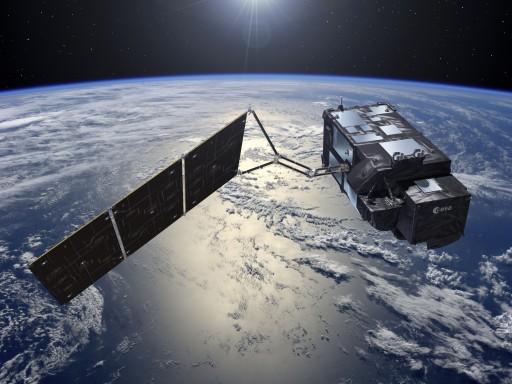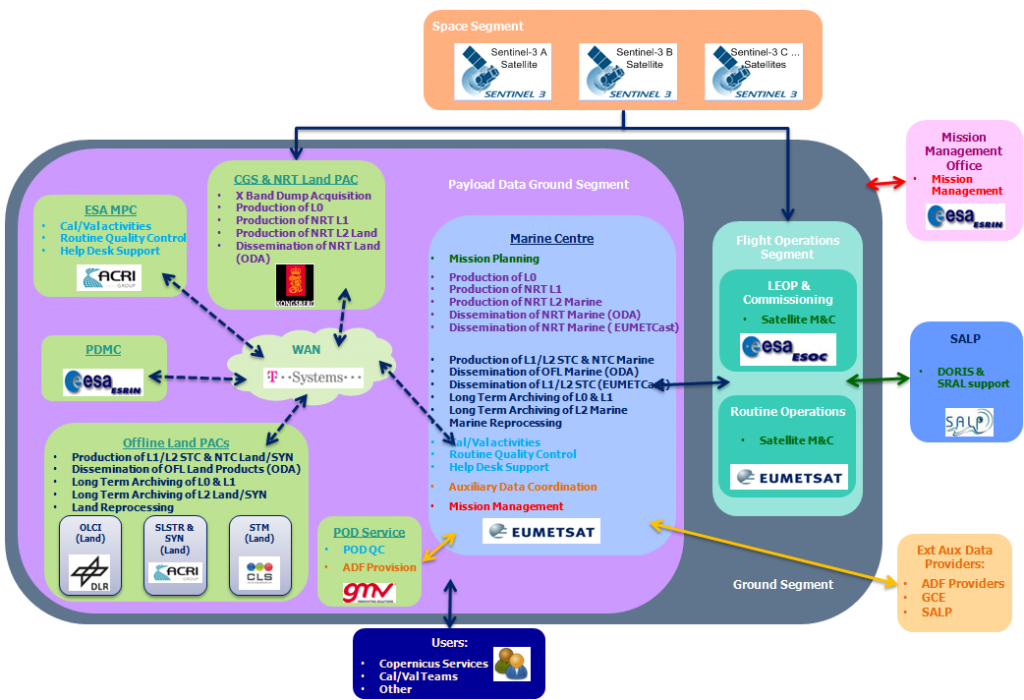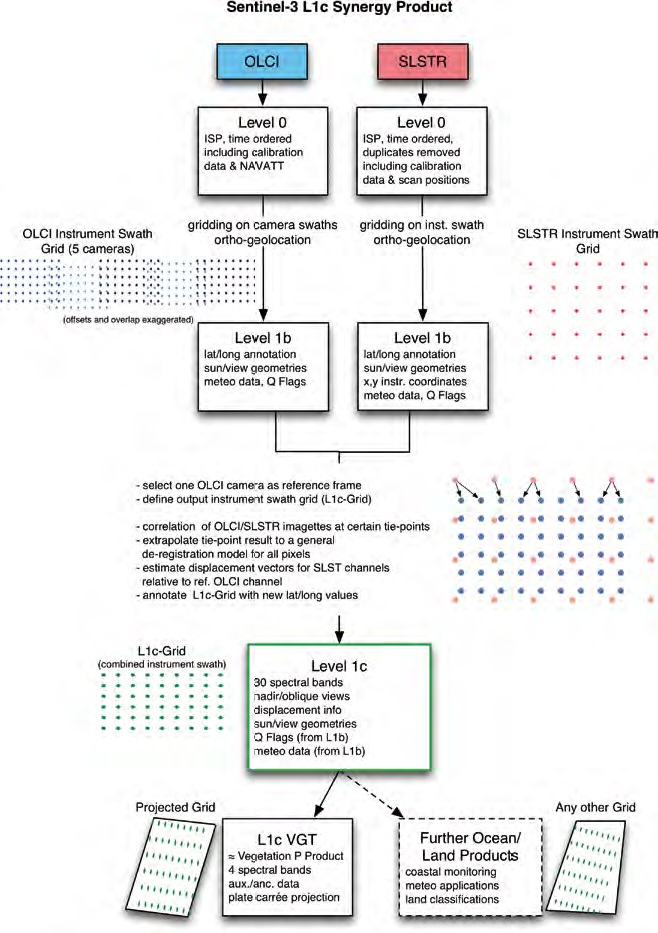Sentinel-3 Ground Segment

The Sentinel-3 mission is aiming to deliver continuous ocean and land observation data with a consistent quality, high-level of availability and near real time data release. Data products delivered by the Sentinel-3 mission include ocean altimetry and temperature, land optical observation products, ice topography, vegetation and hydrology products.
Within the framework of the GMES program, ESA and the European Weather Agency EUMETSAT have established a specific arrangement dealing with the cooperation on the Sentinel-3 mission. ESA is responsible for all spacecraft-related operations from the start of design work through the construction and launch of the satellites and the in-orbit commissioning tasks. EUMETSAT will take over as the operator of the Sentinel-3 satellites, receiving, processing and distributing science data and controlling the spacecraft during routine operations.


The Sentinel-3 ground segment is comprised of two major segments: the Flight Operation System (FOS) and the Payload Data Ground Segment (PDGS).
In combination, the two are responsible for commanding and monitoring the spacecraft constellation, acquiring payload data followed by processing and dissemination of data products to users. Furthermore, these two entities interface with the Mission Management tasked with overall responsibility of routine mission operations, the Data Access Ground Segment in charge of providing access to Sentinel-3 data and relaying data requests to management, and finally SSALTO (Segment Sol multimissions d’ALTimétrie, d’Orbitographie et de localisation précise) responsible for Precise Orbit Determination through the DORIS system.
The Flight Operation System is primarily responsible for monitoring the health of the Sentinel-3 spacecraft, controlling platform-related operations and commanding of payload activities on a schedule driven by the user community. Ground stations responsible for the collection of telemetry data, the collection of tracking data and the uplink of spacecraft commands are ESA’s Kiruna station (primary) and as backup, the Svalbard and Troll stations.


The Flight Operations Control Center is in charge of hardware and software command coding and transfer, housekeeping data analysis and archiving. Also part of FOS is the Mission Planning System which manages command requests and schedules spacecraft and payload operations accordingly. Procedure and command validation is provided by a Spacecraft Simulator and a dedicated Flight Dynamics Team is in charge of orbit determination and spacecraft attitude tracking as well as the preparation of orbital adjustments and slew maneuvers along with support of general spacecraft dynamics and navigation.
The Payload Data Ground Segment is responsible for receiving, processing and distributing Sentinel-3 data products within the quality and timeliness requirements of the GMES program.
For Sentinel-3 three different types of data products will be delivered to the community – Near Real Time Data made available less than three hours after acquisition, Short Time Critical Data Products generated for distribution less than 48 hours after acquisition, and Non-Time Critical Products published within one month after collection.
The Data Dissemination Chain for the Sentinel-3 mission starts at the Core Ground Station in Svalbard, providing X-Band service for the collection of science data every orbit of the mission. Raw data is then delivered to a series of processing centers.
A Land Processing and Archiving Center is responsible for the Near-Real Time production of OLCI data products and Short-Time Critical Data/Non-Time Critical Data for the SRAL and MWR instruments. A Marine Center delivers all Marine products and each center has a Mission Performance Monitoring function.
Because of the fast delivery schedule for data products, the PDGS largely relies on automation for the generation of data products with no manual interaction required during routine mission operations. As part of the Near Real Time System, data is automatically processed to yield Level 0, 1 and 2 products within three hours of acquisition. Level 1 & 2 products are available to all users while access to Level 0 is limited to special users. Data is relayed to a short-term archive to be available soon after acquisition before going through a second archiving stage to enter the Long Term Data Archives which are also available for access by data users.
Data distribution for Sentinel-3 is based on EUMETSAT’s multi-mission dissemination architecture based on DVB-S (Digital Video Broadcast-Satellite) multicast technology (EUMETCast).
